 Have you met these sisters yet? They’re three of the newest members of Colonial Williamsburg’s Rare Breeds Program. They were also my loudest (and cutest) interviews to date!
Have you met these sisters yet? They’re three of the newest members of Colonial Williamsburg’s Rare Breeds Program. They were also my loudest (and cutest) interviews to date!
How did they get their names? The coach and livestock crew always picks a theme for the new bull used in the Devon Cattle herd to determine what they will call the heifers he sires. These girls are all supposed to be named after “Greek Gods and Goddesses” which explains Juno and Venus. But, Pi? It may not be a name plucked from mythology, but it is a letter in the Greek alphabet. The real story behind her name has to do with her birthday. Pi was born on March 14 (3-14 or π). They just couldn’t resist.
Pi and Juno are a little tough to tell apart since they were born within a week of each other and are so close in size. But little Venus, the baby of the group—she’s easy to spot (and remember). Who can forget a face like that?
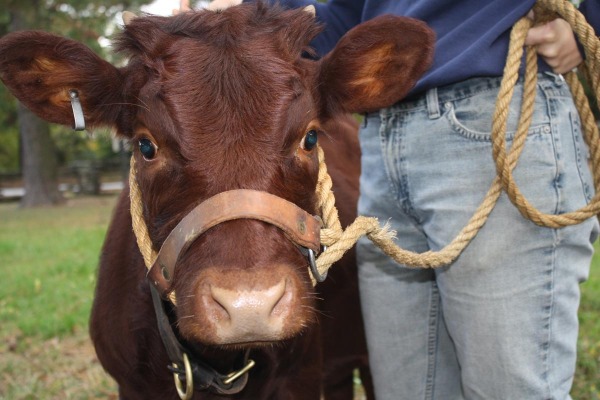 In the 18th century, colonists also named their milking cows. Farmers and their families would often spend every day with them, some for up to 20 years. It’s easy to understand the bond and relationships that would have resulted from that interaction. Even though we only spent about an hour with these girls, I was impressed by both their personalities and their intelligence.
In the 18th century, colonists also named their milking cows. Farmers and their families would often spend every day with them, some for up to 20 years. It’s easy to understand the bond and relationships that would have resulted from that interaction. Even though we only spent about an hour with these girls, I was impressed by both their personalities and their intelligence.
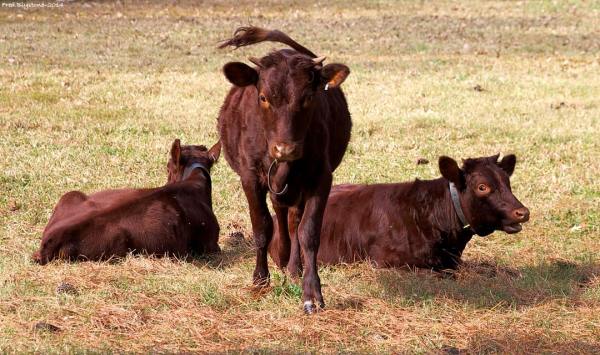 Lisa Carpenter is very proud of how far her team has already come with its training. She’s currently working with the trio of youngsters to halter break them. It may sound easy enough but even at this size, cows are strong—and stubborn. Imagine leash training a puppy and then magnify that experience by ten! It’s a good thing Carpenter has such an impressive resumé. She grew up on a farm in Michigan, one that’s been in her family since 1829 and one they still run today. And while she’s been spending a lot of time with these calves, her main role with Colonial Williamsburg is to work with our oxen.
Lisa Carpenter is very proud of how far her team has already come with its training. She’s currently working with the trio of youngsters to halter break them. It may sound easy enough but even at this size, cows are strong—and stubborn. Imagine leash training a puppy and then magnify that experience by ten! It’s a good thing Carpenter has such an impressive resumé. She grew up on a farm in Michigan, one that’s been in her family since 1829 and one they still run today. And while she’s been spending a lot of time with these calves, her main role with Colonial Williamsburg is to work with our oxen.
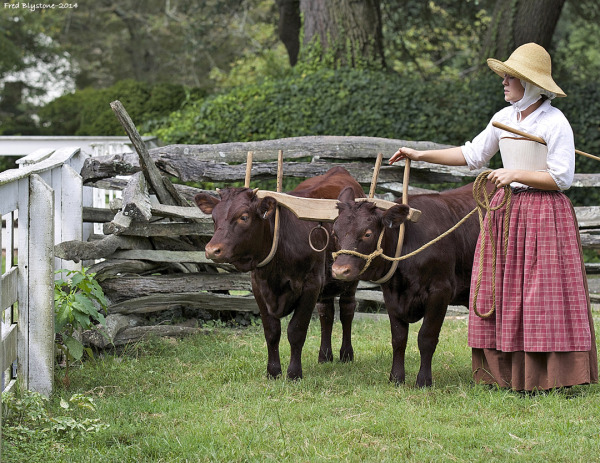 Juno and Pi may be pictured in a yoke, but don’t insult them by referring to them as ‘”oxen!” As Lisa explained, “an ox isn’t born, it’s made.” The designation is reserved for steers (neutered males) that have been trained to work in the yoke and have reached physical maturity (four years). Cows and heifers work just as well as steers in the yoke, but would be referred to as “working cattle” and not oxen. These three will grow into cows that will eventually provide milk for the Historic Foodways. Just as in the 18th century, the milk is skimmed—the cream used for cooking or making butter.
Juno and Pi may be pictured in a yoke, but don’t insult them by referring to them as ‘”oxen!” As Lisa explained, “an ox isn’t born, it’s made.” The designation is reserved for steers (neutered males) that have been trained to work in the yoke and have reached physical maturity (four years). Cows and heifers work just as well as steers in the yoke, but would be referred to as “working cattle” and not oxen. These three will grow into cows that will eventually provide milk for the Historic Foodways. Just as in the 18th century, the milk is skimmed—the cream used for cooking or making butter.
 American Milking Devon Cattle have been around since the 1600s and they are one of the rarest breeds still in existence. Cattle of this type existed in the colonial capital in the 1700s. We can be sure of it because Colonial Williamsburg archaeologists have found remains that match this type of cattle, making them an historically accurate addition to our living museum.
American Milking Devon Cattle have been around since the 1600s and they are one of the rarest breeds still in existence. Cattle of this type existed in the colonial capital in the 1700s. We can be sure of it because Colonial Williamsburg archaeologists have found remains that match this type of cattle, making them an historically accurate addition to our living museum.
At any given time, we have roughly 20 males and females that make up our herd. And while most modern cattle are highly specialized and bred solely for one purpose, Devons provide three: milk, meat, and muscle power.
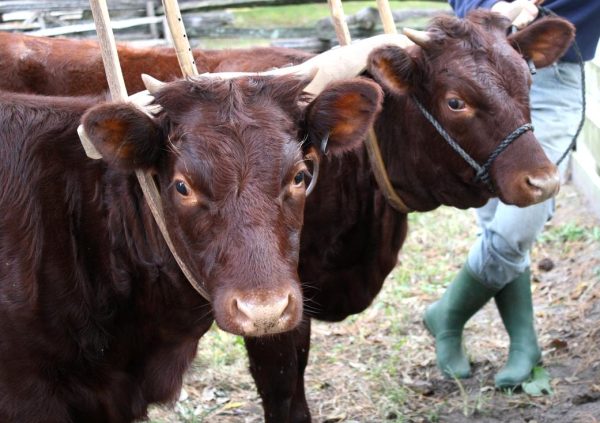 My first question for Carpenter was whether all cows have horns. I thought males were the only ones to have them. My misconception likely stems from the fact that modern farmers dehorn the cattle when they’re still calves. It’s done as a safety precaution. In the 18th century, way before the use of plastic, those horns were extremely useful. After slaughter, they were removed to make powder horns, buttons, and flatware.
My first question for Carpenter was whether all cows have horns. I thought males were the only ones to have them. My misconception likely stems from the fact that modern farmers dehorn the cattle when they’re still calves. It’s done as a safety precaution. In the 18th century, way before the use of plastic, those horns were extremely useful. After slaughter, they were removed to make powder horns, buttons, and flatware.
 With my question out of the way, I then asked the most common question Lisa gets from guests. It seems most people aren’t used to seeing red cattle and at first, don’t realize they’re cattle at all. As a society, we’ve grown accustomed to the widely promoted black-and-white Holsteins that grace billboards and television screens encouraging us to “Eat More Chicken” or buy more Ben & Jerry’s.
With my question out of the way, I then asked the most common question Lisa gets from guests. It seems most people aren’t used to seeing red cattle and at first, don’t realize they’re cattle at all. As a society, we’ve grown accustomed to the widely promoted black-and-white Holsteins that grace billboards and television screens encouraging us to “Eat More Chicken” or buy more Ben & Jerry’s.
But personally, I think our cattle are the real superstars. They’re raising awareness about a dying breed and in the process, saving their own kind from extinction. And that should put a smile on your face too!
I would like to give a special “thank you” to Fred Blystone for helping me to capture many of these moments with our new friends. Which image do you like best? My personal favorite is the shot of Pi sticking out her tongue for the camera!


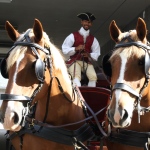

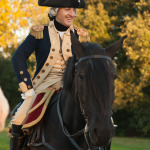
The article was fascinating to read, and I do remember seeing the cows when I’ve visited Williamsburg. I think it is great that Williamsburg is working on perpetuating these cattle.
I do have to fact-check one point. The article mentions that the cows are to be named after Greek gods and goddesses. The names Juno and Venus are not Greek however, they are Roman. Specifically they’re the Roman versions of Hera and Aphrodite.
Matt, you are indeed correct! I didn’t catch that about the Greek vs Roman goddesses. Thank you for pointing it out. I’ll probably withhold that info from Juno and Venus. They’ve gone their whole lives thinking they’re Greek 🙂
That is interesting, I’ve seen signs on farms that breed polled herefords and really never realized what “polled” meant. Thank you for the genetics lesson Jeff.
I agree. Interesting to discover!
Lisa really didn’t answer your question. Not all cattle have horns. Some breeds are polled (meaning naturally hornless). Polled is the dominant gene so if a homozygous polled bull is mated to a horned cow the resulting calf will be polled. Angus are probably the most famous polled breed in the world.
Sorry about the genetics lesson, I am an animal scientist and couldn’t resist. I love agriculture and history and CW is one of my favorite places to visit.
Jeff, please don’t apologize. I love learning new things!
Great informative article!
Thank you, Jeannie. It was a fun blog post to write!
Great article!
Great article. I am a volunteer training to be a teamster with a team of oxen in Southern California. Looking forward to getting back to Colonial Williamsburg to meet these ladies.
Thanks for shaing.
Steve, thank you for your feedback! We hope to see you back in the Revolutionary City soon.
Great photos of some beautiful animals. Thank goodness for the rare breeds program that insures the future of such utilitarian animals.
Yes, John! I completely agree. One of my favorite parts about our living museum is that we strive to be historically accurate in all aspects of the experience, including our livestock. And Lisa is one talented and patient trainer!